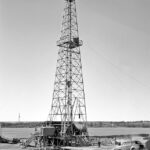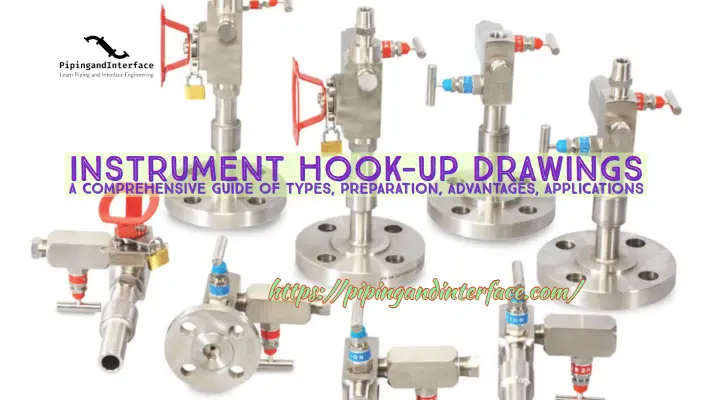Directional drilling is a boring method that doesn’t drill vertically downward straight lines. In the 1920s the directional drilling process became popular due to the development of curvey instruments. Earlier, in conventional drilling techniques, the drill bit, drill string, pipe, and casing were put to go in a straight line. Now in most offshore locations and platforms, directional drilling is more popular. Directional drilling uses a series of planned directional changes along the wellbore. Due to the technological advancements over the past 100 years, amazing engineering feats are happening in terms of angles, turns, and buried distances covered. Techniques like horizontal, multilateral, and extended reach drilling (ERD) are providing enhanced oil recovery to dramatically increase the yield of a downhole.
Why is the directional drilling technique so valuable? Advantages of directional drilling
There are various advantages that the directional drilling technique provides over the conventional ones.
- In directional drilling, multiple boreholes can be drilled from the same rig. It reduces surface disturbance and environmental impact.
- A large radius of the oilfield can be tapped using directional drilling technology as the operation can be performed using one rig, and the cost will be reduced to a huge extent.
- Using directional drilling, more of the hydrocarbon reservoirs are explored. It also explores oil-saturated sand or shale.
- Directional drilling is a much faster method. It maintains the integrity of roadways, buildings, and natural features.
- It reduces the contamination of groundwater pollution and thus protects the ecosystem and adjacent areas.
- Directional drilling increases productivity as it can easily drill beneath surface obstructions or ongoing site operations.
- The technique of directional drilling is safe, durable, and not dependent on weather disruptions.
Working Principle of Directional Drilling
The starting phase of directional drilling is similar to vertical wellbores. However, after reaching designated kickoff points, the directional driller changes the path by increasing the well inclination to start the build section. The direction of the drill bit and tool face is decided using the information from surveys. Some sensors monitor the trajectory of the wellbore along the well path.
To achieve the desired trajectory, directional capability, and drilling efficiency, the directional drilling technique manipulates various parameters like the weight on bit, bottom-hole assembly geometry, rotating speed, bottom-hole assembly stiffness, stabilizer placement, hole diameter, and angle, formation characteristics, etc.
The side forces acting on the bit and the bottom hole assembly can be altered using varying stabilizer placement in the drill string. This helps to increase, maintain, or decrease inclination which in technical terms is referred to as building, holding, or dropping angle. Click here to learn more about Oil and Gas Drilling.
Directional Drilling Operations
Directional drillers employ several techniques to steer a well to its target. Some of those techniques are
Jetting:
While drilling through loose or unconsolidated formations, a jetting assembly provides the directional capability. Roller cone bits with either a large extended nozzle or with one large nozzle and two small nozzles are used as Jetting bits. The “high side” reference provided by the large nozzles deflects the well path alternately sliding or rotating the drill string.
Kicking off:
It means diverting a well path from one trajectory to another. Depending on the complexity of the planned trajectory, the number of KOPs in a single well path is decided.
Nudging:
When several close proximity wellbores cause magnetic interference issues increasing the risk of collision with other wellbores, the nudging technique is used in top hole sections. In this method, the well path is deflected from vertical to pass the hazard and when the hazard has been passed it is steered back to vertical.
Whipstock operations:
In whipstock operations, a wedge-shaped steel tool, known as a whipstock is deployed downhole to mechanically alter the well path. It is oriented to deflect the bit from the original borehole at a slight angle and in the direction of the desired azimuth for the sidetrack. Whipstock operations are used in cased or open holes.
Sidetracking:
Sidetracking is the process of deflecting a well path from an existing wellbore. It is performed to avoid a well collapse, a zone of instability, or a section of a previously drilled wellbore. To initiate multilateral drilling operations or to confirm the reservoir’s true vertical depth, Sidetracking is also widely used. Sometimes, they sidetrack wells in case expected targets are not encountered.
Geosteering:
Using the geo-steering technique, the formation evaluation data is obtained while drilling. They use measurements-while-drilling (MWD) or logging-while-drilling (LWD) sensors that efficiently provide real-time input for steering decisions in horizontal and high-angle wells. Recent advancements allow MWD and LWD data to be transmitted faster and with greater data density than in the past. These greatly improve the accuracy of well trajectory control.
Equipment used for directional drilling
Modern directional drilling technique uses various equipment like:
- Specialized drillbits
- Mud Motors
- Rotary Steerable Systems (RSS)
- Bottom Hole Assembly (BHA)
- Multi-Shot cameras
- Custom whipstocks
- Networked or wired pipe
- Three-dimensional measuring equipment like MWD, LWD, etc.
Applications of directional drilling | Types of directional drilling
Directional drilling is widely used in various oil and gas drilling operations. Their application greatly improves the production capacity with high efficiency. Extensive use of directional drilling techniques is found in the following types of drilling services:
- Horizontal drilling
- Multilateral drilling
- Straight hole drilling
- Controlled drilling
- Sealed sand zone drilling
- Fault drilling
- Salt dome drilling
- Relief well drilling
- Extended reach drilling
- Coiled tubing drilling
The following online video course will help you to learn the step-by-step methods on how Oil and Gas Well is drilled. Click here to access the course.
Directional drilling companies
A large number of companies perform directional drilling worldwide. A list of some of the renowned directional drilling companies is provided below:
Directional drilling companies in Canada
- Ark Directional Services
- Atlantic Directional Inc.
- Axis Energy Services
- Cathedral Energy Services
- Compass Directional Services
- D&R Directional
- Kambi MWD Services
- Meridian Directional Services
- Motorworks Drilling Solutions
- Newsco Directional and Horizontal Drilling Services
- Pacesetter Directional Drilling
- Phoenix Technology Services
- OilField Guidance
- Savanna Energy Services
- Ember Resources
- Extreme Engineering
- Mostar Directional Technologies
- Cougar Drilling Solutions
- Departure Energy Services
- Calmena Energy Services
- Boundary Directional
- Choice Directional
- True Directional Services
- Accurate HD
- New Discovery Directional
- Clear Directional Drilling Solutions
- NOVA Downhole Technology
- Standard Directional Services
- HPC Energy Services
- Revolution Directional Services
- CBHDD Trenchless
Directional drilling companies in the USA
- Scientific Drilling International
- Black Viper Energy Services Ltd
- Crescent Directional Drilling
- Directional Drilling Company
- Multishot Directional
- RPM
- Strata Directional
- Quantum Drilling Motors
- Native Navigation
- Pathfinder Energy Services
- Total Directional Services
- Drill Right Technology, Inc.
- Maverick Directional Services
- Professional Directional
- Intrepid Directional Drilling
- Laney Directional Drilling
- Southeast Directional Drilling
- International Directional Services
- Directional Drilling Contractors
- PDI Construction
- Henniker Directional Drilling
- DayStar Directional Drilling
- Sharewell Energy Services LP
- Target Drilling
- Associated Directional Drilling
- Challenger Drilling Inc.
- Drake Directional Drilling
- Spring and Associates, Inc.
- Ventura Directional Drilling
- Magnum Drilling Services
- We-Bore-It
- OnCourse, Inc.
- WellBenders Directional Services
- Downhole Navigator
- Cudd Energy Services
- Boreview Services
- Terra Directional Services
- Surv-Tech
- TerraVici Drilling Solutions
- LEAM Drilling Systems
- Childress Directional Drilling
- Aim Directional Services
- Terrapin Energy Services
- DIG-IT, INC.
- Gardes Energy Services
- Douglas Exploration
Directional drilling companies in Europe
- Transmark-EDS
- Directional Drilling UK
- Target Well Control
- LMR Drilling UK
- Allen Watson
- SW Directional Drilling
- LMR Drilling GmbH
- Land & Marine
Directional drilling companies in Australia/New Zealand
- SADB Directional Drilling
- Ancon Directional Drilling
- Mitchell Directional Drilling
- SJ Directional Drilling P/L
- Hartowijaya
- Wellserv Australia
- Integrated Directional Services
- Australia Wide Directional Drilling
- Drillpower QLD
- Terratest Group
Directional drilling companies in China/Hong Kong
- WellTech – China Oilfield Services Limited
- Dagang Directional Drilling Company
- Greatwall Drilling Company
Directional drilling companies in Indonesia, Malaysia, Singapore
- Qui Handika
- Parama
- Cougar Drilling Solutions
- Mersing Group of Companies
Directional drilling companies in Nigeria, Kenya
- Avionix Energy Ltd.
- GeoWells International Ltd.
Directional drilling companies in Middle East/North Africa
- National Drilling Services
- Intelligent Drilling Services
- Triple L Oil Services
- AlMansoori Directional Drilling Services
- Midwest Oilfield Services
- OiLSERV
- Cougar Drilling Solutions
- FLOW WELL
Directional drilling companies in India and Pakistan
- Jindal Drilling & Industries
- Shiv-Vani
- GeoTarget Drilling Services
- Trenchless Engineering Services
- NRP Projects
Directional drilling companies in Russia
- TehGeoBur
- TPG
- Energy Group
Directional drilling companies in Central/South America
- Integradora de Perforaciones y Servicios
- INVAP
- San Antonio Internacional
However, among all the above-mentioned directional drilling companies the following 5 companies have the major market share:
- Baker Hughes
- Halliburton Co
- Nabors Industries Ltd.
- Scientific Drilling International Inc.
- Weatherford International Plc






